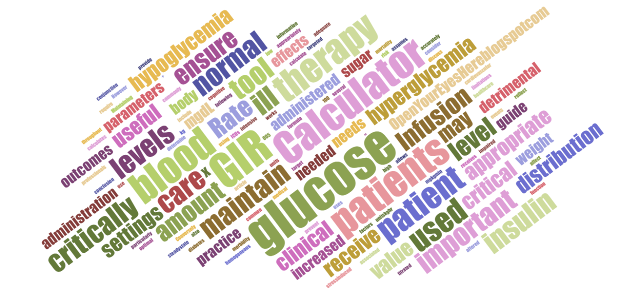Glucose Infusion Rate (GIR)
What is Glucose Infusion Rate Calculator or GIR Calculator
The Glucose Infusion Rate (GIR) Calculator is a medical tool used to calculate the amount of glucose that needs to be administered to a patient to maintain normal blood glucose levels. It is commonly used in critical care settings, such as intensive care units (ICUs), to ensure that patients receive appropriate glucose therapy. In this article, we will discuss what the GIR Calculator is, how it works, and why it is important in clinical practice.
The GIR Calculator uses several parameters to determine the amount of glucose that needs to be administered to a patient. These parameters include the patient's weight, blood glucose level, and insulin infusion rate. The GIR Calculator calculates the amount of glucose needed to maintain a targeted blood glucose level using the following formula:
GIR (mg/kg/min) = [blood glucose level (mg/dL) - target blood glucose level (mg/dL)] / [100 x body weight (kg)] + insulin infusion rate (units/kg/hr) x 0.05
The GIR value can be used to guide the administration of glucose therapy to maintain normal blood glucose levels in critically ill patients. Maintaining normal blood glucose levels is important as hyperglycemia (high blood sugar) and hypoglycemia (low blood sugar) can have detrimental effects on patient outcomes.
The GIR Calculator is an important tool in critical care settings as it allows healthcare professionals to ensure that patients receive appropriate glucose therapy. In critically ill patients, hyperglycemia is common and is associated with increased morbidity and mortality. Conversely, hypoglycemia can also have detrimental effects on patient outcomes, such as increased risk of cardiovascular events and impaired cognitive function.
The GIR Calculator is particularly useful in patients who require insulin therapy, such as those with diabetes or stress-induced hyperglycemia. In these patients, the GIR Calculator can be used to ensure that insulin therapy is titrated appropriately and that the patient receives adequate glucose therapy to prevent hypoglycemia.
While the GIR Calculator is a useful tool in clinical practice, it does have limitations. The GIR Calculator assumes that the patient is in steady-state and that glucose distribution is homogeneous throughout the body. However, in critically ill patients, glucose distribution may be altered, and the GIR Calculator may not accurately reflect the amount of glucose needed to maintain normal blood glucose levels.
In conclusion, the Glucose Infusion Rate Calculator is an important tool used in critical care settings to ensure that patients receive appropriate glucose therapy to maintain normal blood glucose levels. The GIR value can be used to guide the administration of glucose therapy and insulin therapy in critically ill patients. While the GIR Calculator is a useful tool, it is important to consider other factors that may affect glucose distribution in critically ill patients and to use the GIR value in conjunction with other clinical information to provide optimal patient care.
Maybe you also need this tool: Oxygenation Index Calculator
